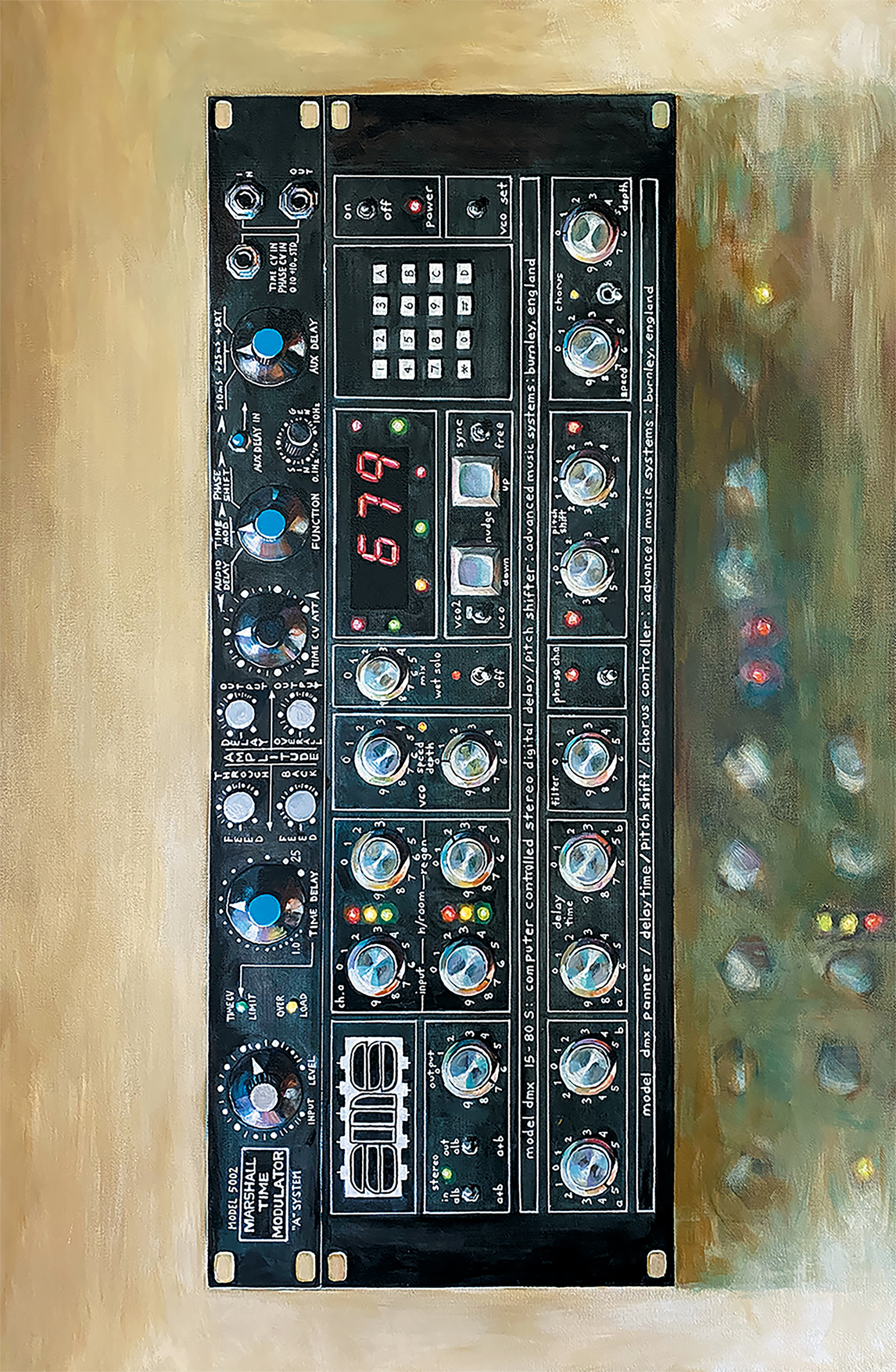Built to work only with the McDSP APB ("analog processing box") units (APB-8, APB-16) [Tape Op #134], the KD1 Kinetic Drive is a plug-in that uses this interesting system. The APB essentially is a one space rackmount box that attaches to your computer's Thunderbolt and audio interface's clocking in order to convert signals to analog, digitally control the analog processing in the APB, and then convert back to digital and return the audio in real time via McDSP's APB plug-ins. It's pretty brilliant, is easy to set up, and once going works great. It's totally recallable analog processing that acts like a plug-in.
I know that digital audio processing is getting better all the time, and I mix in the box quite often just for the extreme recallability that my clients sometimes ask of me. On the one hand, when I send tracks out through my BURL converters, process with real gear, and then record back into a session, I always feel something has happened that brought out more character. I get the same feeling when I use my console for mixing. On the other hand, there are days when I'm in Jackpot! Recording, mixing in the box, and staring at hundreds of thousands of dollars in audio gear that is not being used, simply because I need to work fast and be able to recall sessions all the time. Devices such as McDSP's APB allow these worlds to meet in a new way. Would I replace all my existing gear with a rack of APBs? No, but if I was building a versatile mix room at home I'd consider this system as a big part of my workflow, as it can add that extra analog something and is so flexible.
Previous APB plug-ins have been in the compression, EQ, and console vein, but the KD1 Kinetic Drive is a saturation plug-in, using the APB hardware to create harmonics, crunch, and full blown-out fuzz if needed. With buttons labeled FWD, RWD, and AWD we can select low, high, or all frequency bands for overdrive. A Focus knob picks the frequency, and that amount can be adjusted for boost; I bet you can imagine how much this will help when overdriving bass, kick drums, or guitar solos! There's the Kinetics knob too, which affects "signal compression and voltage supply reaction." I found this hard to discern at first, as I would increase its level and the sound got smoother. It's actually doing real voltage sag, as the "Voltage" metering suggests. It's a good way to get a wild overdrive tone and then tame it down a little to work in the mix. Be aware that it will change the tone a lot, and "more" to the right doesn't mean more distortion! I used little doses of it and felt it did help keep some rowdy synth parts in line.
Speaking of synthesizers, my first experiments with the KD1 Kinetic Drive were on an electronic-based project. I found the KD1 to be amazingly helpful in adding some life and excitement to the direct-recorded parts. Drum machine kick and snare benefitted immensely from the extra edge of crunch, and arpeggiated bass lines could be fattened up with low end distortion or brightened with some higher (FWD) action and Focus. I initially was just testing the plug-in for this review, and soon found myself committing the tracks with the KD1 so I could finish the mix at home!
This APB system might seem expensive at first, until one adds up what 8 or 16 channels of analog audio processing and quality 32-bit conversion would cost. It's likely far more than the $3999 (APB-8) or $6999 (APB-16) you would spend for these. Then, throw in the fact that it's all controllable from plug-ins in your DAW, and that you'll get updates and most new plug-ins at no extra charge. There are other aspects of the overall APB system to be aware of: You'll need to bounce your mixes or commit your tracks in real time – the analog hardware cannot be "sped up" for processing; it's just like printing your mix through a console or hardware. The units also have channel limits, because they are real analog gear, silly! The 8 and 16 in the hardware's name indicates the number of mono channels; divide by 2 for the stereo amount. More units can be purchased, stacked up, and will all work together for more analog power! Note that the APB requires a BNC clock source – it's loaded with converters – so something like my Apogee Duet II [Tape Op #89] that I have at home will not work properly with the APB. On the good side, when you register your APB you get all the current plug-ins for no extra charge.
I really enjoyed using the KD1 Kinetic Drive on my mixes. I really do think some extra analog magic helped on these recent songs, and it's got me intrigued. This could very well be a glimpse at the future of audio processing.




_disp_horizontal_bw.jpg)